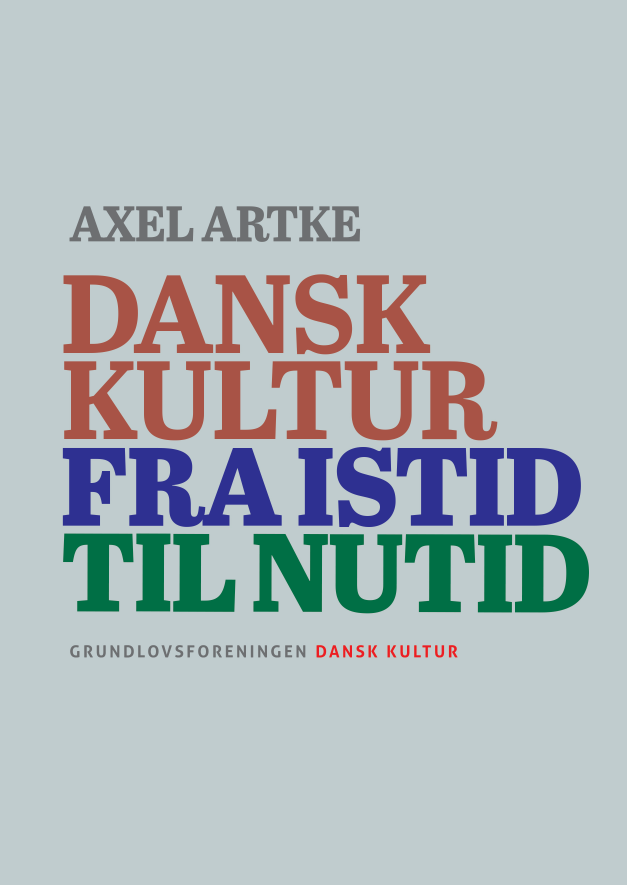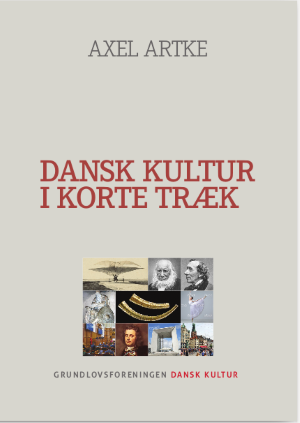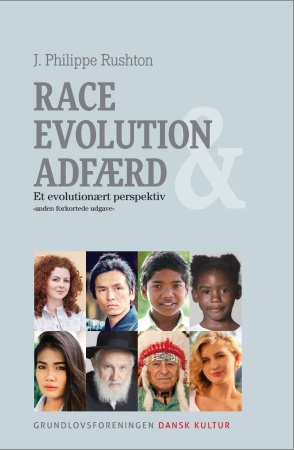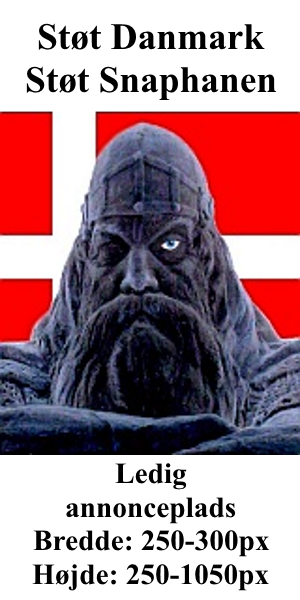by Fjordman
Jeremy Clarkson heads the program Top Gear at the BBC, one of the funniest shows on TV. Since it has absolutely nothing to do with politics or religion, only with cars, it is one of the very few programs at the Burka Broadcasting Corporation still worth seeing. I have to disagree with Clarkson regarding the English national flag, though. Discrediting national flags as signs of “bigotry” is happening all over the Western world. And no, you are not being robbed of pride in your national heritage because of your colonial history. I’m Norwegian. We don’t have a colonial history, yet we are still subject to similar attacks. They don’t do this because you are English, they do this because you are Westerners and – dare I say – white. British colonial history is just a convenient excuse:
A quote from Jeremy Clarkson’s article “We’ve been robbed of our Englishness” in The Sunday Times, 25 November 2007:
»Unge piger der taler jysk og tror på livet«
(en Halfdan Rasmussen-brok, aner ikke hvorfra, men jeg måtte af med den)…men som de ku´synge. Anden december- lørdag i København. Voldsom trængsel og alarm, svensk og jysk høres overalt. Lidt flere billeder her, som kan klikkes op i helskærm.
(Fotos © Snaphanen)
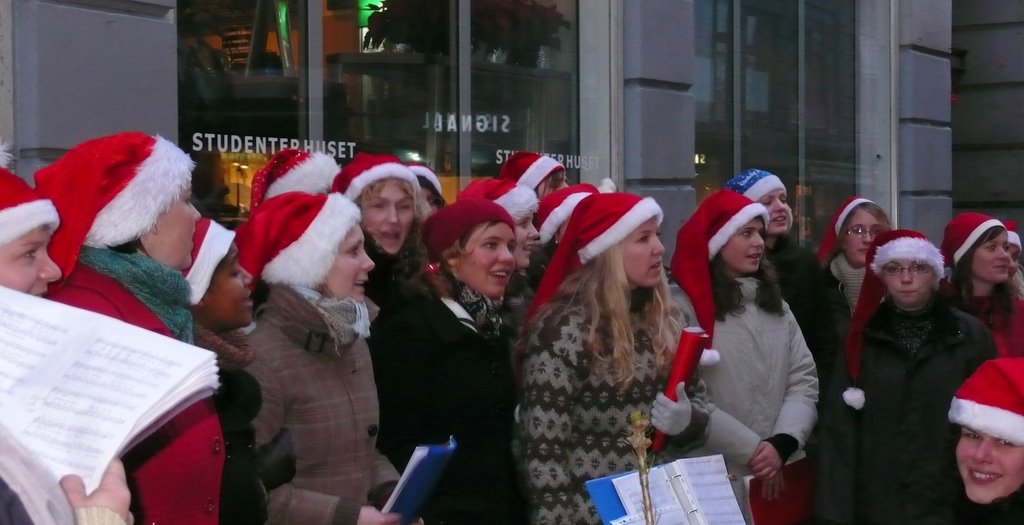
Salem idag : Kammerrätten underkender politikerne
Update: Krig i svensk provinsby efter nazi-march
‘Som at kæmpe mod en byguerilla’, siger svensk lokalpoltiker
Den 8. Salem march foregår idag. Jeg har skrevet indgående om mordet på Daniel Wretström flere gange. (scroll lidt). Han er blevet et symbol på den indvandrede vold mod svenskere, og deltagerne i marchen rækker noget udover de “højreekstreme”, som svenske aviser stadig føler sig tryggest, ved at kalde deltagerne. Og i morgen vil danske journalister , der plejer at skrive af efter de svenske uden at undersøge yderligere, fortælle at det var “nazister” der kom op og slås med “venstreaktivister”. Interessant nok, viser SVT og HD ud af ni fotos, udelukkende moddemonstranterne, og ikke “nazisterne”, til trods for at der er over dobbelt så mange i Salemmarchen. At dømme efter You Tube videoer , er der helt klart neonazister med, men det fremgår også at myndighederne ikke vil have marchen fotograferet af pressen. Den racistiske lynchning af Daniel Wretström er for “ubekvem” for myndighederne.
Efter länsrättens snabba beslut i torsdags att inhibera demonstrationstillståndet, agerade kammarrätten lika snabbt under fredagen och upphävde länsrättens inhibition, Demonstrationer i Salem tillåts. Polisens tillstånd för demonstrationer i Salem gäller alltså idag. Därmed har politikers försök att strypa en grundlagsskyddad rättighet misslyckats. Det är en seger för demokratin.
Erixon.com: DEMONSTRATIONSRÄTTEN VIDMAKTHÅLLEN I SALEM.
Khaled Oday var den der førte kniven og den hovedskyldige. Han skulle angiveligt have retfærdiggjort sin handling, ved at citere længere passager fra Koranen. Han blev kendt psykisk syg og idømt en kortere behandlingsdom. Selvom hændelseforløbet er kendt i detaljer ( Wretström blev umotiveret overfaldet ved et busstoppested af 10 personer, banket i en lille time, derefter blev Odeh tilkaldt pr. mobil, kom med en køkenkniv og skar halsen over på den halvt bevidstløse Wretström, hvis “naziforbindelse” er yderst svagt belyst.) – skriver Martin Lindblom på Modkraft alligevel dette :
Over 1.500 nazister har været forsamlet med fakler og blomster, angiveligt for at mindes en ung nazi-skinhead, der blev dræbt under et slagsmål, og siden 2002 har antifascister forsøgt at forhindre – eller i det mindste forstyrre – marchen.
Det kan ikke forstås på anden måde, end at Lindblom bagatelliserer – måske bifalder – overlagt mord på af gadebander formodede ny-nazister. Dér er han på linje med sine svenske meningsfæller:
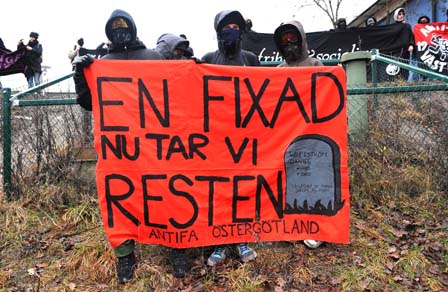
foto : SSU i samarbete med vänsterextremister
Interessant nok findes en del af politiets forundersøgelsesprotokol fra 2001 online, hvordan den så er havnet der.
http://img138.imageshack.us/my.php?image=f01np9.gif
http://img266.imageshack.us/my.php?image=f10bm0.gif
http://img519.imageshack.us/my.php?image=f11vc6.gif
http://img520.imageshack.us/my.php?image=f12wq5.gif
http://img138.imageshack.us/my.php?image=f13pj5.gif
http://img138.imageshack.us/my.php?image=f14ru8.gif
http://img512.imageshack.us/my.php?image=f15bm4.gif
http://img520.imageshack.us/my.php?image=f16te8.gif
http://img512.imageshack.us/my.php?image=f17jj8.gif
http://img249.imageshack.us/my.php?image=f18bq1.gif
http://img249.imageshack.us/my.php?image=f19vo1.gif
http://img520.imageshack.us/my.php?image=f20zj6.gif
http://img137.imageshack.us/my.php?image=f66hm6.gif
http://img516.imageshack.us/my.php?image=f67so8.gif
http://img516.imageshack.us/my.php?image=f68lf7.gif
http://img521.imageshack.us/my.php?image=f69ar9.gif
http://img248.imageshack.us/my.php?image=f151ry1.gif
http://img503.imageshack.us/my.php?image=f152my0.gif
Europa´s fremtid
The Future of Europe , by Jonathan Gelbart
Jeg sluttede dagen igår med at genlæse en af årets store fremadskuende artikler, Daniel Pipes´ “Eurabian Nights”. (En artikel enhver europæisk muslim burde lægge sig uhyre grundigt på sinde, hvad virkeligheden desvære allerede viser, er alt for meget forlangt.)
I postkassen idag lå så denne fra Stanford Review, der ikke så meget peger på scenarier, som den skærer Europa´s akkumulerende problemer ud i pap. Unge europæere bør stå på læsningen her. De af dem, der “stadig læser lange sætninger”, som prof. Jonathan Friedman sarkastisk skrev for et stykke tid siden.
Violent crime has tripled in the last twenty years. Rapes are now commonplace, some even occurring in broad daylight, and young women are afraid to go outside after dark. Certain neighborhoods are now so dangerous that even emergency services and police refuse to enter them out of concern for their own safety. This sounds like a description of Compton in the 1960s, or perhaps the Bronx or Detroit at their very worst.
Yet this is the current state of Malmö, the third-largest city in Sweden.
What has caused this seemingly sudden and dramatic change in this traditionally peaceful Northern European country? It is first helpful to examine exactly who is committing the crimes. The Swedish newspaper Aftonbladet reported in March of 2000 that 9 out of 10 violent crimes in Sweden were committed by ethnic minorities, mostly immigrants from Morocco, Algeria, Libya, and Tunisia, all Muslim-majority countries*. Thirty years ago, there were only very small numbers of Moroccans and Algerians in Sweden. Yet since Sweden’s current immigration system was implemented in the 1970s, refugees from these countries and others have been accepted by the hundreds of thousands, transforming historically homogeneous Sweden into today’s multicultural society.
While Sweden is the most shocking example, it is by no means a unique case……
Similar trends can be found in neighboring Norway and Denmark. And violence is not the only problem. In addition to increasing crime rates among immigrants, Great Britain faces a Muslim population with a disturbingly large fundamentalist contingent; an ICM opinion poll in 2006 revealed that nearly 40% of British Muslims support Islamic sharia law replacing current British law, and 20% have some sympathy for the suicide bombers who attacked London on July 7, 2005. The large number of Muslim immigrants in Britain has changed the character of some areas so drastically that native Britons are leaving the country at unprecedented levels, heading to the United States, Spain, and Australia to start their lives anew.
France’s dealings with its large Muslim population have made international headlines more than a few times in the past several years, from the 2004 ban on religious head-coverings to the 2005 countrywide civil unrest. Such strife continues to plague France today. Muslim immigrants in France have such a high birthrate compared to the native French that some projections foresee a Muslim-majority nation within just twenty five years. Muslims are already a majority in French prisons, where they comprise a shocking seventy percent of inmates.
The Muslim populations of several major cities in Italy were large enough in 2002 for journalist Oriana Fallaci to feel compelled to write her controversial book, The Rage and the Pride, which laments what she views as the loss of her own country to an invading culture. Religious tensions in the Netherlands came to the forefront in 2004 with the brutal murder of filmmaker Theo van Gogh, killed by jihadist Mohammed Bouyeri in the heart of Amsterdam. In a letter affixed to van Gogh’s corpse by the dagger that killed him, Bouyeri linked the murder to van Gogh’s 10-minute film, Submission, which deals with violence against women in Muslim societies. Bouyeri named Dutch parliament member Ayaan Hirsi Ali, an outspoken critic of radical Islam, as his next target, causing Hirsi Ali to flee to the United States, where she remains today. The leader of the Dutch Party for Freedom, Geert Wilders, has received numerous death threats for his anti-immigrant and anti-Muslim comments and now lives under twenty-four-hour police protection.
As the above data show, nearly every country in Western Europe faces a similar, very worrisome situation.
So why do European governments continue to admit still more Muslim immigrants each year, towing fundamentalism and intolerance in their wake? Their main argument is that these immigrants are needed to support the welfare state. The native European population is aging rapidly and their low birth rates are not replenishing the workforce, compelling many states to import immigrants in order to keep the system afloat. Unfortunately, the most recent wave of immigration is actually a net drain on the system. An article from The Copenhagen Post published in 2005 states that half of all immigrants from the Third World are not qualified for even the lowest-paying jobs in Denmark. According to Paul Scheffer, a professor of urban sociology at Amsterdam University, close to 60% of first-generation Turkish and Moroccan populations in the Netherlands are unemployed. Without jobs, the immigrants receive unemployment benefits, straining the system even more and pushing it ever closer toward inevitable bankruptcy. Since they already receive free food, housing, and spending money from the government, many immigrants (especially women) never work a single day in Europe. Apparently the architects of this immigration plan did not anticipate the fact that increased immigration does not necessarily correlate to an increased tax base.
There are two major problems with the situation in Europe today.
The first is that native Europeans are being steadily reduced to a minority in their own countries. Never in the history of the world has any nation, let alone so many nations simultaneously, accepted so many immigrants in peacetime. And not just immigrants, for that alone would not be a problem, but immigrants from a completely alien culture who largely refuse to integrate into the respective societies of their adoptive nations. It should be noted that without immigration, the current incredibly low European birthrates would lead to a net loss in population over the next several decades. However, these levels would eventually recover, and the civil strife currently wracking the continent would be absent. Some pundits, most notably Mark Steyn, believe that events like the 2005 riots in France are the opening shots of a European civil war. While the accuracy of this prediction is not yet clear, what is clear is that Europe has a serious problem, and at this point nothing is being done to resolve it.
The second major problem with mass Muslim immigration to Europe is the way it has chipped away at the precepts of liberty and free speech on which all Western democracies were built. Those who criticize the policies which have led to the current crisis are either threatened, ostracized, or killed, often by native Europeans. The most prominent example of this tragic treatment was the late Pim Fortuyn. His highly critical views of Islam (perhaps best exemplified by his 1997 book, Against the Islamization of Our Culture) earned him great acclaim by some and vilification by others, including the Dutch media and many left-wing organizations. Widely considered the frontrunner for the Dutch Prime Ministry, he was assassinated in 2002 by native Dutchman Volkert van der Graaf, who felt Fortuyn was “an ever-growing danger who would affect many people in society.” Excluding events during World War II, it was the Netherlands’ first political assassination in over 300 years. This is an ominous indicator of just how dangerous the political landscape has become, and paints a bleak picture of the future.
While immigration in itself is not inherently bad, the way and the extent to which it is being embraced in Europe is doing irreparable damage to the continent’s historical foundations as well as its social fabric. These problems will continue to compound and worsen unless Europe’s national governments reconsider their immigration policies and take immediate action. One helpful first step would be to end knee-jerk rejection of constructive criticism from people like Pim Fortuyn who truly have Europe’s best interests at heart. Europe must assess its current situation from an objective standpoint and determine whether it wants to identify itself in the next century as it has in the past—as the vanguard of progressive thought and haute culture—or as “Eurabia,” a mere extension of the repressive, intolerant Middle East.
Stanford Review (* Jeg tager indtil videre forbehold for at Aftonbladet virkelig skulle have skrevet det, jeg kan ikke udelukke det, men jeg må undersøge det.)
Finally — an admission that prison does work
But we need more than 100,000 prison places to beat the criminals
Theodore Dalrymple
The decision of the Government to increase the number of prison places to 100,000 is a tacit admission that the criminal justice policy of all British governments for the past half-century has been based upon lies and deceptions.
The consistent failure to immobilise criminals properly has been a wicked and sanctimonious betrayal of the working class by middle-class intellectuals, who have dressed up a refusal to spend tax money on the preservation of law and order, especially in poor areas, as compassion and understanding for the working class. It is true that most criminals are working class; but it is also true that most victims, always much more numerous than criminals, are working class. By indulging in anti-prison propaganda, middle-class intellectuals have demonstrated what they really thought deep down about the working class: that is it inherently and ex officio criminal.
We often hear that Britain locks up more people than any other country in Europe, or that our criminal justice is uniquely punitive. A moment’s reflection will demonstrate that these claims, heard on the lips of some of our senior judges, is fatuous in the extreme. If we imprisoned people at the same rate per crimes committed as the Spanish, we would have between 350,000 and 400,000 prisoners, not the paltry 80,000 that we do have.
Again, it is often pointed out that the recidivism rate of prisoners serving short-term prison sentences is 70 per cent (actually, this is the reconviction rate: given the low level of detection, the reoffending rate is probably nearer 100 per cent). But this is an argument for drastically lengthened prison sentences, not for leniency: and indeed there is evidence that the recidivism rate is proportional to the length of sentence served.
Prison overcrowding is ‘critical’
Moreover, the recidivism rate of non-custodial community sentences is more or less the same as with short term-prison sentences, but with this difference: that while they are in prison, prisoners cannot commit crimes against the general public. It is easy to demonstrate that millions of crimes a year are committed by people already serving community sentences; thus failure to imprison properly is one of the main causes of crime in this now deeply criminalised country.
If the Government believed that imprisonment did not achieve anything, there would be no case to increase prison spaces by so much as a single cell. But it knows different: and in acknowledging this, despite the concerted efforts of the Home Office and academic criminologists to throw up smokescreens, it is acknowledging that all previous policy has been — well, criminal actually.
Theodore Dalrymple is a former prison doctor



